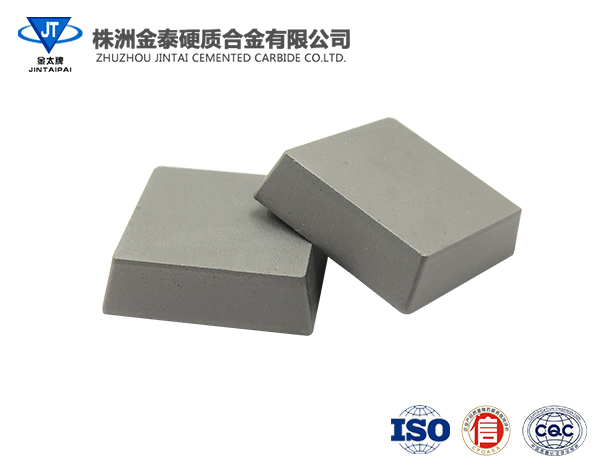A milling cutter is a rotating tool with one or more teeth used for milling operations. During operation, each cutter tooth intermittently cuts off the remainder of the workpiece. Milling cutters are mainly used on milling machines to process planes, steps, grooves, forming surfaces and cutting workpieces, etc. There are many types of milling cutters on the market today, and there are milling cutters made of different materials. So, do you know how milling cutters are classified?
There are many ways to classify milling cutters. They can be classified according to the direction of the cutter teeth, use, tooth back form, structure, material, etc.
1. Classification according to the direction of the blade teeth
1. Straight tooth milling cutter
The teeth are straight and parallel to the axis of the milling cutter. But now ordinary milling cutters are rarely made into straight teeth. Because the entire tooth length of this type of milling cutter is in contact with the workpiece at the same time, and leaves the workpiece at the same time, and the previous tooth has left the workpiece, the following tooth may not be in contact with the workpiece, which is prone to vibration, affecting the machining accuracy, and also shortening the milling cutter. life span.
2. Helical tooth milling cutter
There are differences between left- and right-handed helical tooth milling cutters. Since the cutter teeth are wound obliquely on the cutter body, during processing, the front teeth have not yet left, and the rear teeth have already started cutting. In this way, there will be no vibration during processing, and the processed surface will be brighter.
2. Classification by use
1. Cylindrical milling cutter
Used for processing flat surfaces on horizontal milling machines. The teeth are distributed on the circumference of the milling cutter, and are divided into two types: straight teeth and spiral teeth according to the tooth shape. According to the number of teeth, they are divided into two types: coarse teeth and fine teeth. The spiral tooth coarse tooth milling cutter has fewer teeth, high tooth strength, and large chip space, so it is suitable for rough machining; the fine tooth milling cutter is suitable for finishing machining.
2. Face milling cutter
It is used for vertical milling machines, end milling machines or gantry milling machines. It has cutter teeth on the upper processing plane, end face and circumference, and there are also coarse teeth and fine teeth. There are three types of structures: integral type, toothed type and indexable type.
3. End mill
It is used for processing grooves and step surfaces, etc. The cutter teeth are on the circumference and end surface, and cannot feed along the axial direction during work. When the end mill has end teeth that pass through the center, it can feed axially.
4. Three-sided edge milling cutter
It is used to process various grooves and step surfaces. It has cutter teeth on both sides and circumference.
5. Angle milling cutter
Used for milling grooves at a certain angle, there are two types of single-angle and double-angle milling cutters.
6. Saw blade milling cutter
It is used for processing deep grooves and cutting workpieces, and has more teeth on its circumference. In order to reduce friction during milling, there are secondary deflection angles of 15′ ~ 1° on both sides of the cutter teeth. In addition, there are keyway milling cutters, dovetail groove milling cutters, T-shaped slot milling cutters and various forming milling cutters.
3. Classification by tooth back form
1. Sharp tooth milling cutter
This kind of milling cutter is easy to manufacture and therefore has a wide range of applications. After the cutter teeth of the milling cutter are blunted, the flank surface of the cutter teeth is ground with a grinding wheel on a tool grinder. The rake surface is already prepared during production and does not need to be sharpened again.
2. Shovel tooth milling cutter
The flank surface of this type of milling cutter is not flat, but curved. The flank surface is made on a shovel tooth lathe. After the shovel tooth milling cutter is blunted, only the rake face needs to be sharpened, and the flank face does not need to be sharpened. The characteristic of this type of milling cutter is that the shape of the teeth is not affected when grinding the rake face.
4. Classification by structure
1. Integral type
The blade body and blade teeth are made in one piece. It is relatively simple to manufacture, but large milling cutters are generally not made like this because it is a waste of material.
2. Welding type
The cutter teeth are made of carbide or other wear-resistant tool materials and are brazed to the cutter body.
3. Insert tooth type
The body of this kind of milling cutter is made of ordinary steel, and the blade of tool steel is embedded in the body. Large milling cutter
Mostly this method is used. Making milling cutters with the tooth insert method can save tool steel materials, and at the same time, if one of the cutter teeth is worn out, it can also save the tool steel material.
It can be removed and replaced with a good one without sacrificing the entire milling cutter. However, small-sized milling cutters cannot use the method of inserting teeth due to their limited status.
5. Classification by material
1. High-speed steel cutting tools; 2. Carbide cutting tools; 3. Diamond cutting tools; 4. Cutting tools made of other materials, such as cubic boron nitride cutting tools, ceramic cutting tools, etc.
The above is an introduction to how milling cutters are classified. There are so many types of milling cutters. When selecting a milling cutter, you must consider its number of teeth, which affects the smoothness of cutting and the requirements for the cutting rate of the machine tool.
Post time: Aug-13-2024













